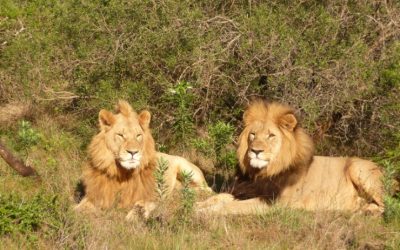Geographical Overview of Botswana
Botswana, located in the heart of Southern Africa, is a landlocked country renowned for its diverse landscapes and rich natural heritage. The country features vast plains, sprawling deserts, and lush wetlands, which contribute to its unique geographical identity. Its central location gives it a semi-arid climate, characterized by hot summers and mild winters, influencing various ecosystems and wildlife across the region. This geographical overview provides a foundation for understanding the climatic patterns and environmental factors that shape Botswana’s climate.
Location and Topography
Botswana is a landlocked country situated in the southern part of Africa, bordered by Namibia to the west and north, Zimbabwe to the northeast, Zambia to the north, and South Africa to the south and southeast. Its geographical location places it within the Kalahari Desert region, characterized by vast arid plains and semi-arid features. The country’s topography is predominantly flat with gently undulating plains, with the immense Makgadikgadi and Nxai pans covering significant portions of its landscape. The Okavango Delta, one of the world’s largest inland deltas, lies in the northwest and is a lush, water-rich area that contrasts sharply with the surrounding arid zones. Overall, Botswana’s diverse topography influences its climate and ecological zones, making it a unique landscape in the region.
Major Landforms and Features
Botswana, situated in Southern Africa, is characterized by a diverse geographical landscape that significantly influences its climate. The country features vast plains, the Kalahari Desert covering a significant portion of its territory, and varied landforms including rolling hills and seasonal wetlands. The Okavango Delta, one of the world’s largest inland deltas, is a major landform in Botswana, providing a lush habitat amidst the arid surroundings. The landscape is predominantly flat with some low-lying hills, such as the Tswapong and Otse Hills, adding to its topographical diversity. These landforms play a vital role in shaping Botswana’s climate patterns, which include hot summers and mild winters, with significant seasonal variations in rainfall across different regions.
Climate Zones in Botswana
Botswana’s climate is characterized by distinct climate zones that influence the country’s environment and agriculture. These zones range from arid desert areas in the southwest to more humid regions in the east and northeast. Understanding these climate zones is essential for comprehending Botswana’s weather patterns, biodiversity, and how communities adapt to their surroundings.
Desert and Semi-Arid Regions
Botswana’s climate is characterized by diverse climatic zones, primarily influenced by its desert and semi-arid regions. These zones significantly impact the country’s weather patterns, vegetation, and overall ecosystem. Understanding these climate zones is essential to grasp the environmental conditions faced by Botswana.
- Desert Regions: The Kalahari Desert covers a large part of Botswana, characterized by extremely arid conditions, minimal rainfall, and high temperatures. These areas experience significant temperature fluctuations between day and night and have sparse vegetation adapted to dry conditions.
- Semi-Arid Regions: Surrounding the desert areas are semi-arid zones that receive slightly more rainfall, supporting more diverse plant and animal life. These regions have more defined seasonal variations and are crucial for agriculture and human settlement.
Highveld and Plateaus
Botswana’s climate is characterized by distinct zones that influence its weather patterns and ecological systems. The Highveld and Plateaus are key climate zones within the country, each with unique features. The Highveld area, located in the central region, has a moderate climate with warm summers and cooler winters. It experiences seasonal rainfall primarily in the summer months, supporting diverse vegetation and wildlife. The Plateaus, which extend across much of Botswana, feature higher elevations with a cooler and drier climate. These areas receive less rainfall and have more arid conditions, influencing the types of flora and fauna found there. Overall, Botswana’s climate zones are shaped by its topography, resulting in varied weather and environmental conditions across the country.
Impacts of Elevation
Botswana’s climate is significantly influenced by its diverse climate zones and varying elevation levels. The country primarily features semi-arid and arid zones, with some regions experiencing more humid conditions. Elevation plays a vital role in shaping local climate patterns; higher altitudes tend to have cooler temperatures and increased rainfall, which can support different vegetation and agricultural activities. Conversely, lower-lying areas often face harsher, drier conditions, leading to challenges such as limited water availability and droughts. These variations impact the biodiversity, agriculture, and settlement patterns across Botswana, making understanding climate zones and elevation crucial for sustainable development and environmental management.
Temperature Patterns
Temperature patterns play a significant role in shaping the climate of Botswana, influencing its environment, agriculture, and daily life. Understanding these patterns helps to unlock insights into the country’s weather variations and seasonal changes. In this article, we explore the key temperature trends that characterize Botswana’s diverse climate zones.
Average Temperatures by Season
Botswana’s climate is characterized by distinct temperature patterns that vary throughout the year, influenced by its semi-arid environment. Temperature fluctuations are more pronounced between the seasons, with hot summers and cooler winters defining the yearly cycle. During summer, which typically spans from November to March, average temperatures range from 20°C to 35°C, with some areas experiencing even higher heat. These months are often marked by intense daytime heat, occasional thunderstorms, and humid conditions. Winter, from June to August, brings cooler temperatures that range between 4°C to 20°C, especially during the early mornings and evenings when it can be quite chilly. The shoulder seasons of spring and autumn serve as transitional periods with moderate temperatures, offering relatively mild weather. Overall, Botswana’s temperature patterns reflect its adaptation to a semi-arid climate, with significant variations between seasons influencing agriculture, wildlife, and daily life.
Daily Temperature Fluctuations
Temperatures in Botswana exhibit distinct daily fluctuations influenced by its semi-arid climate. Typically, daytime temperatures rise considerably due to strong sunlight, often reaching into the high 20s to low 30s Celsius in summer. As the sun sets, temperatures drop sharply, leading to cooler evenings and nights, sometimes going below 10°C. This daily temperature variation is more pronounced during the dry season when clear skies allow for rapid cooling overnight. In winter, the difference between daytime and nighttime temperatures remains noticeable, though overall temperatures are cooler. These patterns are characteristic of Botswana’s climate, impacting the local ecosystem and agricultural activities. Understanding these temperature fluctuations is essential for planning and adaptation in the region’s communities and wildlife habitats.
Temperature Extremes
Botswana experiences a semi-arid climate characterized by distinct temperature patterns and notable temperature extremes throughout the year. During the summer months, from November to February, temperatures can rise sharply, often surpassing 35°C (95°F), with some areas experiencing heat waves that push the mercury even higher. Winters, from June to August, tend to be milder, with daytime temperatures rarely dropping below 10°C (50°F), though nighttime lows can fall close to freezing, especially in desert regions like the Kalahari. These variations reflect the region’s continental climate influences and sparse cloud cover, allowing for significant diurnal temperature fluctuations. Extreme temperature events, such as prolonged heatwaves and cold spells, are becoming more frequent due to climate variability, impacting agriculture and daily life across Botswana.
Rainfall and Precipitation
Rainfall and precipitation play a vital role in shaping the climate of Botswana. As a semi-arid country located in Southern Africa, Botswana experiences highly variable rainfall patterns that influence its ecosystems, agriculture, and water resources. Understanding these patterns is essential for managing the country’s environment and planning for climatic challenges.
Rainfall Distribution by Region
Rainfall and precipitation patterns in Botswana play a crucial role in shaping the country’s climate and agriculture. These patterns vary significantly across different regions, influencing local ecosystems and water availability.
- In the northern regions of Botswana, such as the Okavango Delta, rainfall is higher, often exceeding 600 millimeters annually, supporting lush vegetation and diverse wildlife.
- The eastern parts, including the Tsabong and the Chobe area, experience moderate rainfall ranging from 300 to 600 millimeters per year, contributing to a semi-arid climate.
- The central and western regions, like Ghanzi and the Kalahari Desert, receive very little rainfall, often less than 200 millimeters annually, resulting in arid conditions and sparse vegetation.
Rainfall distribution in Botswana is seasonal, with most precipitation occurring during the summer months from November to March, driven by the movement of the Intertropical Convergence Zone. Understanding these regional variations is vital for water resource management and agricultural planning in the country.
Seasonal Rainfall Patterns
Rainfall and precipitation are vital components of Botswana’s climate, influencing agriculture, water resources, and overall environmental conditions. The country experiences varied precipitation patterns across different regions, with the northern areas receiving more rain compared to the arid and semi-arid southern parts. Precipitation in Botswana primarily occurs during the summer months from November to March, driven by the southward movement of the Intertropical Convergence Zone. Seasonal rainfall patterns play a crucial role in shaping the landscape and ecosystem, with some regions experiencing distinct wet and dry seasons. These patterns are essential for planning agricultural activities and managing water supply in the country, especially considering the recurrent droughts that affect Botswana’s climate stability.
Regional Variability and Droughts
Rainfall and precipitation are critical components of Botswana’s climate, directly influencing its agricultural productivity and water resources. The country experiences a semi-arid climate characterized by irregular and seasonal rainfall patterns, which vary significantly across different regions. This regional variability in precipitation leads to diverse ecological zones, from arid deserts to more humid savannahs, affecting local livelihoods and biodiversity. Droughts are a recurrent challenge in Botswana, often exacerbated by prolonged periods of below-average rainfall. These droughts can have severe impacts on food security, water availability, and economic stability, making effective water management and climate resilience strategies essential for the country’s sustainable development.
Humidity and Atmospheric Conditions
Humidity and atmospheric conditions play a significant role in shaping the climate of Botswana. Understanding these elements helps to grasp the country’s weather patterns, impact on daily life, and ecological environment. Botswana’s climate is generally characterized by dry conditions, but variations in humidity levels influence its overall atmospheric behavior and weather phenomena.
Humidity Levels Across Seasons

Humidity levels in Botswana vary significantly across different seasons, influenced by the country’s semi-arid climate. During the summer months, from November to February, humidity tends to be higher due to increased temperatures and the presence of the rainy season, leading to more moisture in the air. Conversely, in the winter months, from June to August, humidity levels drop as the air becomes drier and cooler, resulting in a more arid atmosphere. These fluctuations impact weather patterns and living conditions throughout the year, shaping the unique climate characteristics of Botswana.
Impact on Local Ecosystems
Humility and atmospheric conditions play a crucial role in shaping the local ecosystems of Botswana. The country’s climate is predominantly semi-arid, characterized by low humidity levels that influence the availability of water resources essential for plant and animal life. During dry seasons, the low humidity exacerbates drought conditions, leading to water scarcity that affects both flora and fauna. Conversely, periods of higher humidity, often during seasonal rains, stimulate growth and reproduction among many species, supporting biodiversity. These fluctuating atmospheric conditions create a dynamic environment where species must adapt to changing moisture levels, influencing migration patterns, population health, and ecosystem stability across Botswana.
Climate Trends and Changes
Climate trends and changes are increasingly impacting regions around the world, including Botswana. As a landlocked country in Southern Africa, Botswana faces unique challenges related to rising temperatures, shifting rainfall patterns, and prolonged droughts. Understanding these climate dynamics is essential for developing strategies to adapt and ensure sustainable development in the face of a changing climate.
Historical Climate Data
Botswana’s climate has experienced significant variations over the past century, reflecting broader global climate trends and regional environmental changes. Historical climate data indicate patterns of increasing temperatures, changing rainfall patterns, and more frequent extreme weather events, which have impacted agriculture, water resources, and biodiversity in the region.
- Temperature Rise: Data from the past decades show a consistent increase in average temperatures across Botswana, with recent decades being the warmest on record. This trend aligns with global warming patterns and has led to hotter and drier conditions in many parts of the country.
- Changing Rainfall Patterns: Botswana’s rainfall has become more unpredictable, with some regions experiencing prolonged droughts while others see irregular heavy rains. These shifts threaten traditional farming practices and water availability.
- Increased Frequency of Extreme Events: Records indicate more frequent droughts and sporadic flooding, reducing agricultural productivity and impacting ecosystems.
- Historical Data Sources: Climate data have been collected through meteorological stations, satellite observations, and climate modeling, providing valuable insights into long-term trends and aiding in adaptation strategies.
Effects of Climate Change
Botswana is experiencing notable climate trends and changes that are impacting both the environment and the country’s socio-economic activities. Over recent decades, the climate has become increasingly arid, with rising temperatures and decreasing rainfall patterns affecting agriculture, water resources, and biodiversity.
- Increasing temperatures lead to more frequent and intense heatwaves, stressing human health, livestock, and crops.
- Reduced and irregular rainfall disrupts traditional farming practices and freshwater availability, exacerbating drought conditions.
- Desertification and soil degradation threaten vital habitats and reduce land productivity.
- Changes in climate patterns have contributed to the decline of wildlife populations and biodiversity in Botswana’s national parks and reserves.
- The frequency of extreme weather events, such as droughts and floods, has increased, causing economic and infrastructural challenges.
Effects of Climate Change in Botswana
- Decreased agricultural yields threaten food security for local communities and the nation.
- Water scarcity becomes more pronounced, impacting domestic use, agriculture, and wildlife sustainability.
- Economic dependence on tourism and agriculture makes Botswana vulnerable to climate fluctuations, affecting livelihoods and national development.
- Increased vulnerability to conservation challenges as habitats and migration patterns shift due to changing climate conditions.
- Health risks linked to heat stress, hunger, and waterborne diseases rise as climate variability intensifies.
Future Climate Projections
Botswana is experiencing significant climate trends characterized by increasing temperatures, irregular rainfall patterns, and prolonged droughts. These changes have led to challenges in agriculture, water availability, and biodiversity conservation throughout the region. Over recent decades, temperature averages have risen, contributing to more frequent and severe heatwaves, which affect both human health and natural ecosystems.
Future climate projections for Botswana indicate a continued warming trend with increased variability in rainfall. Climate models suggest that the country may face more intense droughts and periods of below-average rainfall, posing risks to livestock, crop production, and water resources. Adaptation strategies such as improved water management, drought-resistant crops, and sustainable land use practices are critical to mitigating these impacts. Addressing these climate changes is essential for securing Botswana’s resilience and sustainable development in the coming decades.





0 Comments